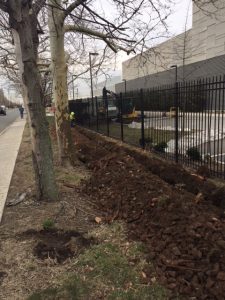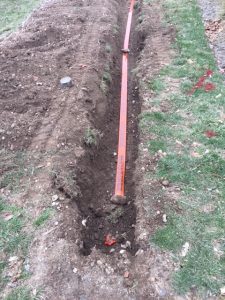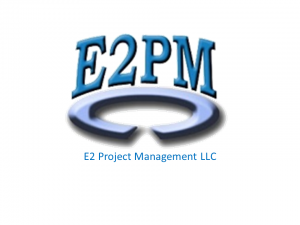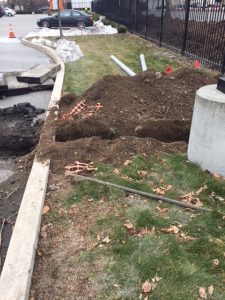Got Gas? Landfill Gas Monitoring
We are talking about landfill gas! Did you know that New Jersey has over 500 permitted landfills, with twelve (12) of them currently in operation? So what happens with the all those non-operating landfills? Once the landfill meets capacity, it must be capped which involves layering clay, a liner, soil and vegetation. Once closed, these landfills can be converted into golf courses, shopping centers, malls and parks.
 Of course conducting any work on these sites can be very dangerous, as when landfills decompose they release methane gas. Therefore, completing any subsurface work at these locations requires a permit and approval from the New Jersey Department of Environmental Protection (NJDEP) Bureau of Landfill and Recycling Management under the Division of Solid and Hazardous Waste.
Of course conducting any work on these sites can be very dangerous, as when landfills decompose they release methane gas. Therefore, completing any subsurface work at these locations requires a permit and approval from the New Jersey Department of Environmental Protection (NJDEP) Bureau of Landfill and Recycling Management under the Division of Solid and Hazardous Waste.
Our client was hired to install fiber optic cable at a former landfill that currently operates as a data center. Therefore, a Major Landfill Disruption Permit was required to be prepared and submitted for approval by the NJDEP Division of Solid and Hazardous Waste. Following the NJDEP Solid Waste Regulations at N.J.A.C. 7:26-2A.8(i), and the NJDEP Technical Manual for Sanitary Landfill permits and Approvals, E2PM’s environmental scientists and Professional Engineer (PE) prepared the comprehensive application for this permit which included, but was not limited to:
- Detailed description of the proposed work to be performed with drawings;
- Elevation drawings, which included excavation depths of the proposed work;
- Copy of the property deed;
- Leachate, odor, gas and dust controls;
- Health and Safety Plan;
- Contingency Plan for discovery of hazardous wastes;
- Landfill cap restoration.
Our client’s application was approved and they received their Major Landfill Disruption Approval Letter. As part of the Permit, the excavation required oversight to monitor landfill gases, volatile organic compounds (VOCs), and particulate matter. E2PM performed real-time air monitoring with direct reading instrumentation. The site-specific action levels were designed to keep potential occupation exposures in project work areas below the American Conference of Governmental Industrial Hygienists (ACGIH) Threshold Limit Values (TLVs).
 E2PM’s site-safety officer utilized a photoionization detector (PID) to monitor VOCs, a Miniram to monitor particulate matter, and a 4-gas level meter to monitor explosive gases within the employees breathing zone continuously. Every 30 minutes the readings were recorded in the designated field book and log sheet. In addition, soils were screened with the PID to determine if the encountered soils were contaminated and required off-site disposal. Fortunately, no impacted soils were encountered.
E2PM’s site-safety officer utilized a photoionization detector (PID) to monitor VOCs, a Miniram to monitor particulate matter, and a 4-gas level meter to monitor explosive gases within the employees breathing zone continuously. Every 30 minutes the readings were recorded in the designated field book and log sheet. In addition, soils were screened with the PID to determine if the encountered soils were contaminated and required off-site disposal. Fortunately, no impacted soils were encountered.
As required by the approved permit, thirty (30) days following disruption activities, E2PM submitted a Final Report to the NJDEP Division of Solid and Hazardous Waste. This report documented the oversight and real-time monitoring of the gases. The report also included photo documentation of the landfill disruption activities.
E2PM’s diverse in-house capabilities were able to complete this project safely and in a cost-effective manner. We were able to complete these activities for our client at almost half the cost of a larger corporate firm. In addition, we were able to serve our client in an efficient and timely manner.


Social